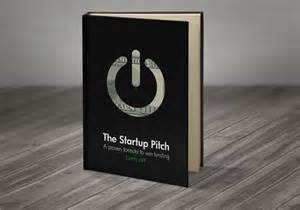Book Recommendation: The Startup Pitch by Chris Lipp
 While I specialize in sales and executive level presentations I’ve always had a spectator’s fascination with startup pitches, because of their high stakes, no-nonsense audiences and emphasis on brevity. That’s the reason I read The Startup Pitch: A Proven Formula to Win Funding
While I specialize in sales and executive level presentations I’ve always had a spectator’s fascination with startup pitches, because of their high stakes, no-nonsense audiences and emphasis on brevity. That’s the reason I read The Startup Pitch: A Proven Formula to Win Funding, but the reason I’m strongly recommending it is that the author is an expert who has can talk the talk very clearly but has also walked it. It also doesn’t hurt that the principles he advocates—such as understanding your audience, the value of structure and clarity, the relative unimportance of the slide deck, etc.—align with the ones I constantly preach.
Lipp’s formula is simple. He says investors are just looking for two simple things: low risk and high return. Your pitch needs to prove you can deliver those two simple things, and that means covering four essential points, in order and without fail:
Problem: What is the problem you’re facing or the trend you’re exploiting?
Solution: What’s your unique solution and what are its benefits?
Market: What’s the potential market and how will you capture it?
Business: How will you profitably get, keep and grow customers?
While the four point formula covers the reasoning behind your pitch, you need to add what Lipp calls four major elements of influence: credibility, audience value, data and story. These elements are similar to what you will find in many presentation books, including my own, but the book is chock full of real life examples from actual pitches, both successes and failures. These examples make the book an interesting read but more importantly make it credible. In fact, Lipp consistently demonstrates his own principles by effectively using his own elements of influence throughout the book.
Especially interesting is the chapter on delivery, which shows that the word “pitch” is actually a misnomer, because the best ones are actually dialogues. Investors want to know if you are someone they will be able to work with, so they will pepper you with questions and then assess your openness, willingness to listen, and poise under pressure. You have to be open to questions without losing your flow, and that takes preparation and tons of practice—an hour per minute of pitch.
After having absorbed Lipp’s formula, I can imagine his pitch to sell the book idea to a publisher: Entrepreneurs go through many difficult challenges, but few obstacles are as daunting as the pitch to raise money from investors. The typical venture capitalist may hear 750 pitches a year and invest in only three. The solution, after much hard experience, analysis of successful pitches and talking to top VCs, is the formula outlined in this book. There are tens of thousands of potential buyers entering the market every year; that’s if you only count entrepreneurs, because others can also benefit. People will buy the book for its promise and recommend it to others because it will work for them.
You don’t need to be a starry-eyed entrepreneur to benefit from this book. If you make high stakes presentations to tough audiences, I strongly recommend it.


